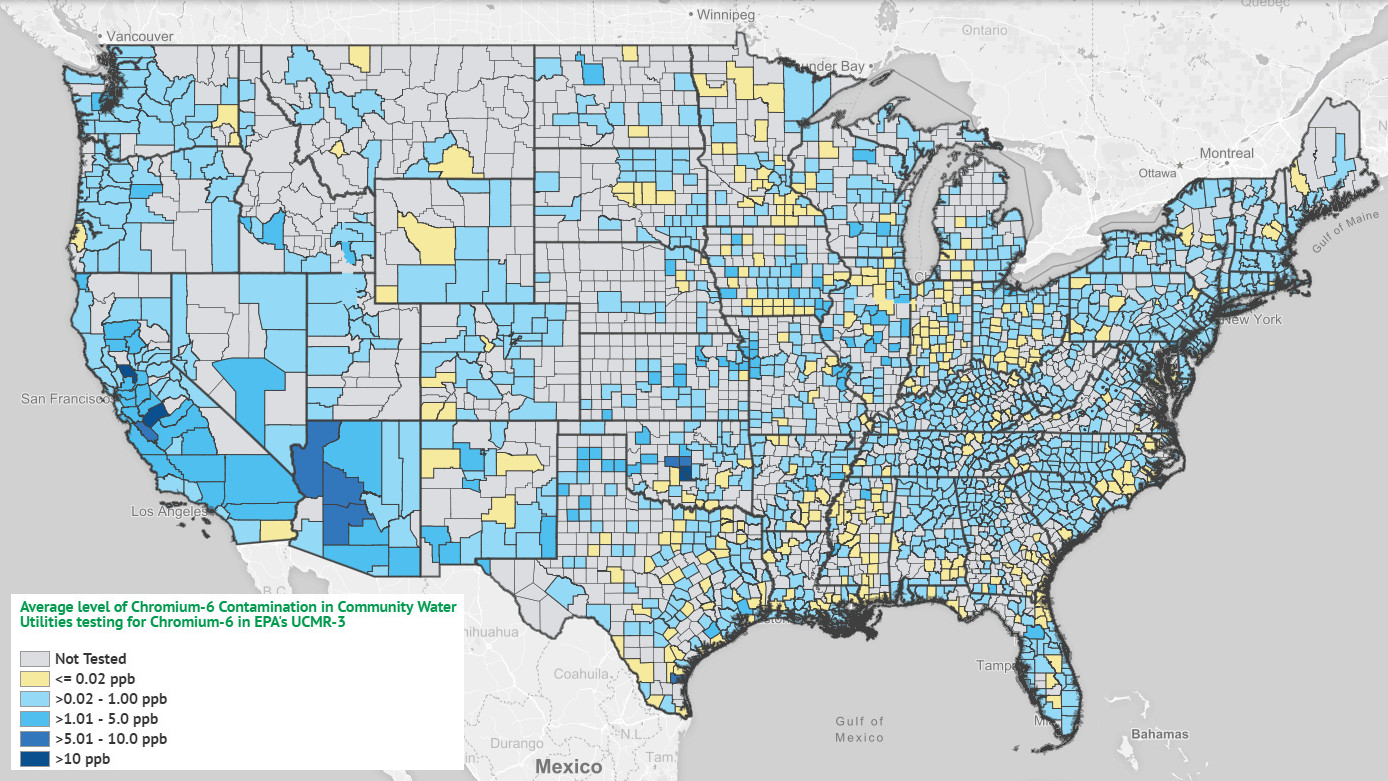Chromium-6 threatens two-thirds of Americans.
Via ewg.org
200+ million americans in all 50 states have contaminated water. From 2013 to 2015, utilities took more than 60,000 samples of drinking water and found chromium-6 in more than 75 percent of them.
The tests found chromium-6 in almost 90 percent of the water systems sampled. Oklahoma, Arizona and California had the highest average statewide levels.
California health goal limit on Chromium-6 in tap water - 0.02 parts per billion, legal limit on Chromium-6 in tap water - 10 parts per billion.
A two-year study by the National Toxicology Program (2008) found that drinking water with chromium-6, or hexavalent chromium, caused cancer in laboratory rats and mice. In 2010, scientists at the respected and influential California Office of Environmental Health Hazard Assessment concluded that ingestion of tiny amounts of chromium-6 can cause cancer in people, a conclusion affirmed by state scientists in New Jersey and North Carolina.
Via ewg.org

This post may contain affiliate links. As an Amazon Associate, I earn from qualifying purchases.